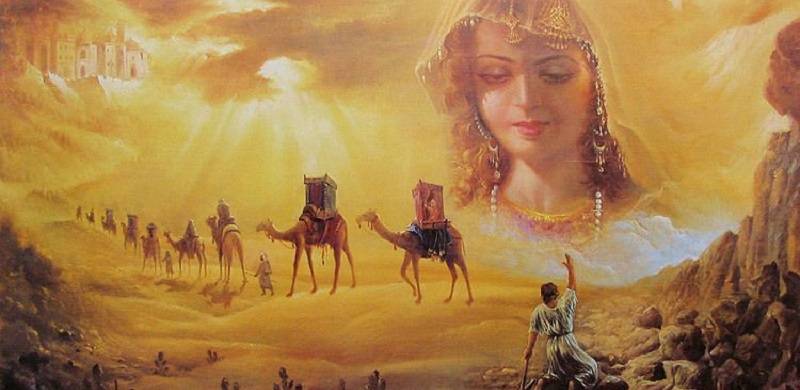
Pakistani history is very rich in culture and customs. Punjabi romantic tales have made an imprint in our lives where some legendary love stories from the past are commonly quoted and recalled. Classic stories have consistently intrigued individuals since time immemorial. Just like the romantic tales of Heer Ranja, Sohni Mahinwal or Anarkali, the tale of Sassi Pannu is one of seven folk romances which are known by almost every Pakistani.
Sassi Pannu is about a faithful wife who got separated from her husband by her rivals. Sassi was the daughter of the Raja of Bhambore, which is located in modern-day Pakistan. Upon Sassi's birth, astrologers anticipated that she would be a curse for the family name. The Raja asked that this child be put in a wooden box and thrown into the river since it was unacceptable that she grow up to marry a Muslim man in the future.
A washer-man discovered the wooden box in the water and choose to embrace the child, since he had no offspring of his own. As Sassi grew up, she was considered as pretty as the fairies of paradise. Tales of her beauty reached Pannu, and he got excited to meet her. For this purpose he went all the way to Bhambore. He deliberately sent garments to Sassi's father so just to be able to have a brief look at her. In the end, the two fell in love and married.
Regardless, when the family members of Pannu found out that their son had married a washer-man's daughter, they mounted their camels and returned to Sindh to get Pannu back. In the dead of the night, they gagged him and carried him back to Balochistan, leaving poor Sassi behind. At the point when Sassi woke up and found that her husband had been taken, she meandered through the streets, searching all over Sindh for him. She at long last met with her demise some place close to Karachi where is today. When Pannu found out about Sassi’s death, he was so devastated to hear the news that he, too, died on spot. Today their graves are aligned side-by-side to each other.
Generations of Pakistanis have sought inspiration from fables and Sufi verse - in light of the fact that these romantic tales were moving, energetic, sad, captivating or every one of these together. The set of experiences preserved from the past can likewise be found today – and they are all around us, from the monuments built in the past to the songs we sing and the tales we tell on screen.
Sassi Pannu is about a faithful wife who got separated from her husband by her rivals. Sassi was the daughter of the Raja of Bhambore, which is located in modern-day Pakistan. Upon Sassi's birth, astrologers anticipated that she would be a curse for the family name. The Raja asked that this child be put in a wooden box and thrown into the river since it was unacceptable that she grow up to marry a Muslim man in the future.
A washer-man discovered the wooden box in the water and choose to embrace the child, since he had no offspring of his own. As Sassi grew up, she was considered as pretty as the fairies of paradise. Tales of her beauty reached Pannu, and he got excited to meet her. For this purpose he went all the way to Bhambore. He deliberately sent garments to Sassi's father so just to be able to have a brief look at her. In the end, the two fell in love and married.
Regardless, when the family members of Pannu found out that their son had married a washer-man's daughter, they mounted their camels and returned to Sindh to get Pannu back. In the dead of the night, they gagged him and carried him back to Balochistan, leaving poor Sassi behind. At the point when Sassi woke up and found that her husband had been taken, she meandered through the streets, searching all over Sindh for him. She at long last met with her demise some place close to Karachi where is today. When Pannu found out about Sassi’s death, he was so devastated to hear the news that he, too, died on spot. Today their graves are aligned side-by-side to each other.
Generations of Pakistanis have sought inspiration from fables and Sufi verse - in light of the fact that these romantic tales were moving, energetic, sad, captivating or every one of these together. The set of experiences preserved from the past can likewise be found today – and they are all around us, from the monuments built in the past to the songs we sing and the tales we tell on screen.
